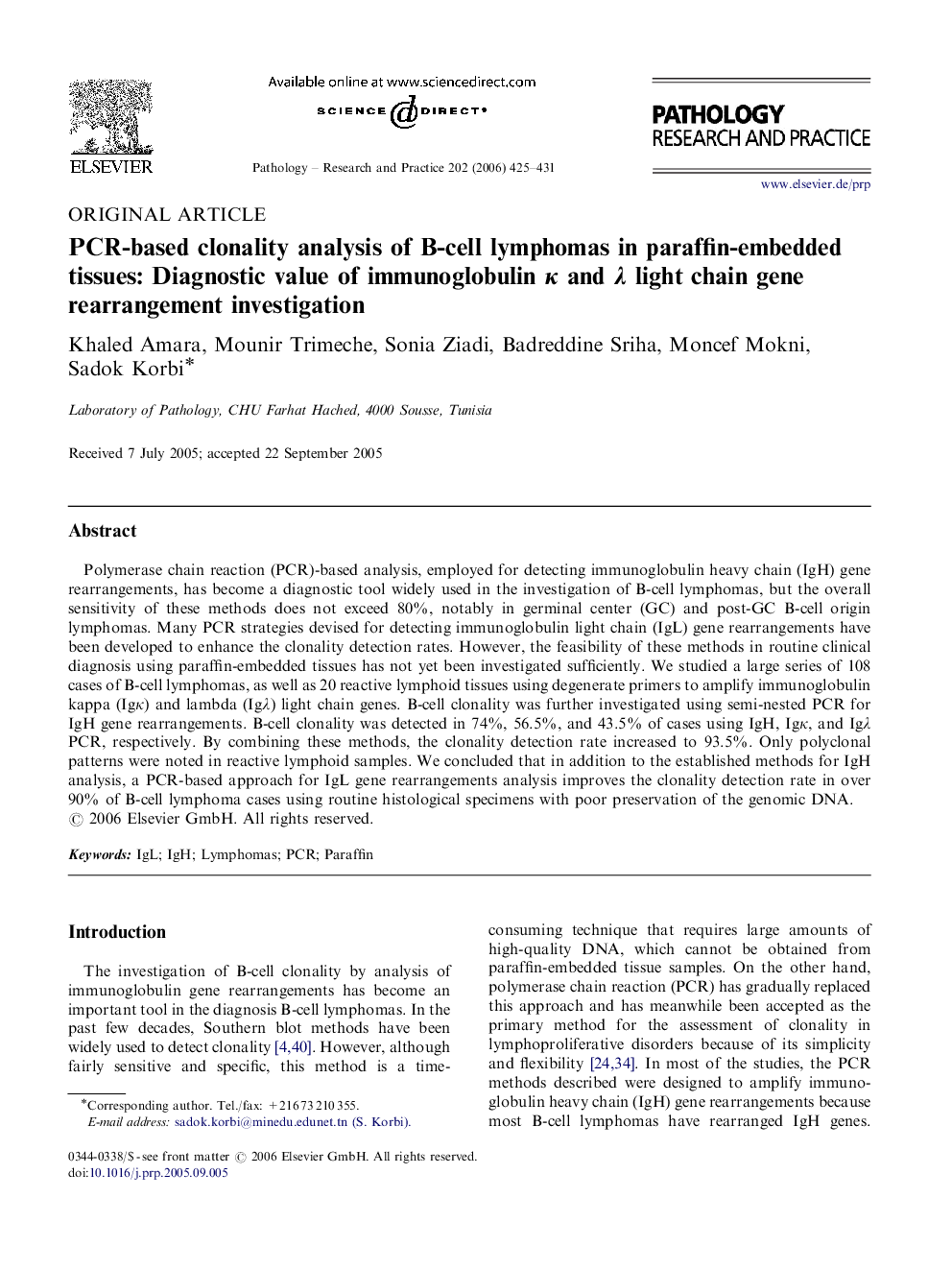| Article ID | Journal | Published Year | Pages | File Type |
|---|---|---|---|---|
| 2156922 | Pathology - Research and Practice | 2006 | 7 Pages |
Polymerase chain reaction (PCR)-based analysis, employed for detecting immunoglobulin heavy chain (IgH) gene rearrangements, has become a diagnostic tool widely used in the investigation of B-cell lymphomas, but the overall sensitivity of these methods does not exceed 80%, notably in germinal center (GC) and post-GC B-cell origin lymphomas. Many PCR strategies devised for detecting immunoglobulin light chain (IgL) gene rearrangements have been developed to enhance the clonality detection rates. However, the feasibility of these methods in routine clinical diagnosis using paraffin-embedded tissues has not yet been investigated sufficiently. We studied a large series of 108 cases of B-cell lymphomas, as well as 20 reactive lymphoid tissues using degenerate primers to amplify immunoglobulin kappa (Igκ) and lambda (Igλ) light chain genes. B-cell clonality was further investigated using semi-nested PCR for IgH gene rearrangements. B-cell clonality was detected in 74%, 56.5%, and 43.5% of cases using IgH, Igκ, and Igλ PCR, respectively. By combining these methods, the clonality detection rate increased to 93.5%. Only polyclonal patterns were noted in reactive lymphoid samples. We concluded that in addition to the established methods for IgH analysis, a PCR-based approach for IgL gene rearrangements analysis improves the clonality detection rate in over 90% of B-cell lymphoma cases using routine histological specimens with poor preservation of the genomic DNA.
